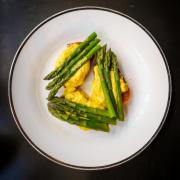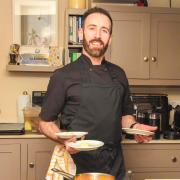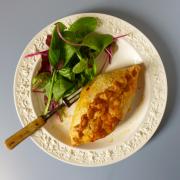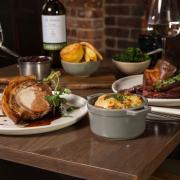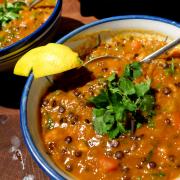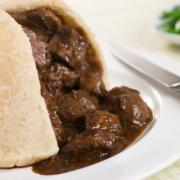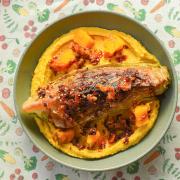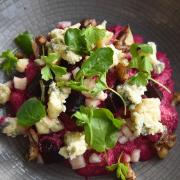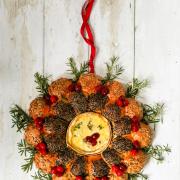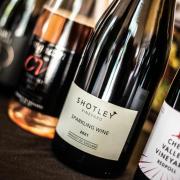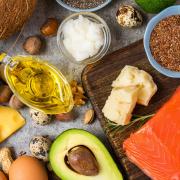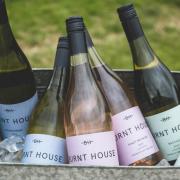The squeeze on global milk prices has hit UK dairy farmers hard. Suffolk’s few remaining dairy producers are also facing tough times. How are they coping and what are they doing to survive and thrive? Rachael Porter finds out

Suffolk’s dairy herds have dwindled from 45 in 2008 to just 30 at the start of 2015, according to DairyCo figures.
Producing milk in this region has always been more costly than, say, the south west of the country, where higher rainfall makes better grass growing conditions. In East Anglia, grass is often replaced with more expensive bought-in feed during the summer, when drier weather means slow or even no grass growth and little grazing.
The good news is that Suffolk’s remaining dairy businesses have adapted and are thriving, thanks to sound business acumen, innovative thinking and the ability to spot and supply niche markets

Gulpher Farm, Felixstowe
Richard Adams is the fourth generation to run a dairy herd in Felixstowe. He manages a 150-cow herd at Gulpher Farm with help from herdsmen Steve Meikle and Nic Bertelsen.
His business has a relatively stable footing in the current tough economic climate.
“We can take the rough with the smooth for a certain period of time. The milk price was very good about 12 months ago, so we invested in solar panels and a wind turbine.

“It’s hurting a bit at the moment, but we can stand it.”
His milk buyer, Arla Foods, is also doing what it can to pay him a decent price in the current market. Richard’s milk is supplied through them to ASDA as liquid milk. He also sells around 2% of his milk direct to Felixstowe ice-cream maker, The Little Ice-cream Company, which has a cafe on the sea front.
“It’s good to get involved at a local level. The Fotherby family make the ice-cream – they’re lovely people and their ice-cream is extremely popular. It’s great for us to be associated with their business and their success. Many people didn’t even know that Felixstowe had a dairy farm.”
He’s not too concerned about the future of his herd, but is fearful that if prices don’t recover soon Suffolk could lose more dairy producers. “Price and profitability are not the only issues, succession is also a problem. I’m lucky – I think my son, Joe, who’s studying for a degree in agriculture at Harper Adams University in Shropshire, will eventually come home to join the family business.”
But the average age of dairy producers is about 55 and the industry is in need of new blood.
“I think it’s vital we attract more people into dairying – it’s a tough job but it can be very rewarding.”
Fen Farm Dairy, Bungay
Owners and managers Jonny and Dulcie Crickmore sell the majority of the milk produced by their 300 strong herd, about 2 million litres a year, to Dairy Crest. Around 7% is either sold as ‘raw’ unpasteurised milk, direct to customers from a vending machine at the farm gate, or processed into cheese – the brie-like Baron Bigod, handmade on the farm and also sold at the farm gate.
Sales have grown through word of mouth. Fen Farm also sells via Foulgers Dairy and at local farmers’ markets, as well as online, delivering overnight. “We have to be careful about how much we sell via these routes due to legislation. We’re not allow to sell through shops, unless it is on our own farm,” says Dulcie.
Milk from the vending machine is £1 per litre, and £3 per litre via mail order, including postage and packing.
But many people are prepared to pay for unpasteurised, local milk. Customers, says Dulcie, want to reconnect with where their food is produced. Their spending priority is good food, not cheap food, and some are also buying for health and dietary reasons.
“One thing all our customers have in common is their loyalty – sales are steady throughout the year. We have people travelling as far as 30 miles on a regular basis. They’ll bring several plastic bottles to fill up and will freeze it.”
“Many people, particularly the older generation, simply like coming to the farm. It takes them back to childhood, when they were sent off to the local dairy farm to buy milk.”
There are plans for the Crickmores to process most, if not all, of their herd’s milk on the farm, and to produce raw cultured butter and cream.
“Both products will add value and help us thrive, even in times of milk price volatility. Top restaurants in London are desperate for top quality cream and butter.” The aim will be to maintain the cottage industry scale of their business.
“We’re going to invest in hand-operated machinery. The trick is to try to do everything as gently as possible,” says Dulcie. “That way we don’t damage the milk. At the moment, our processing plant is gravity fed – we don’t use any pumps. I think that this gives our milk and cheese a delicate texture and flavour.”
Marybelle (PurNatur), Walpole, near Halesworth
Marybelle took a huge leap in April 2014 when it became a subsidiary of Belgian company PurNatur. Filip Rouffe, general manager, says the move was the next logical step to get a foothold in the UK.
“It’s a deal that’s also been good for Marybelle. The focus on producing a local, East Anglian range of dairy products, with the very best quality, and animal health and welfare standards, remains at the core of the business.”
Marybelle has three dedicated Suffolk-based dairy herds that supply milk and meet the company’s farm assurance criteria for milk quality and animal welfare.
“Good quality milk, with the fat and protein levels required to ensure it tastes great, is important to us, as are tip-top herd health and welfare standards. It’s also imperative that Marybelle milk is sourced locally. Provenance is why so many people in Suffolk and East Anglia buy our brand – be it milk, cream, crème fraiche or yoghurt. It’s British, it’s produced on their doorstep and it tastes good.”
Since April last year sales are up 20%, says Filip. “East Anglian consumers are really loyal to the brand – they’re prepared to pay a little more for a local product and support local business and local dairy farmers.” The Marybelle range is sold through more than 60 East of England Co-op stores, and other independent retailers. Filip says the company is also in discussions with the Central Co-op.
The company supplies EATS, which provides school meals to Suffolk primary schools, and has recently signed a contract with the University of East Anglia.
“We’re very positive about our future in East Anglia, and that of our milk suppliers,” says Filip. “We’re investing in our Halesworth plant this year, to increase capacity and widen the range of Marybelle products. “We’ll also continue to look for new retail opportunities and partners in East Anglia. The strength of our brand – and key to our prosperity – in its provenance.”




